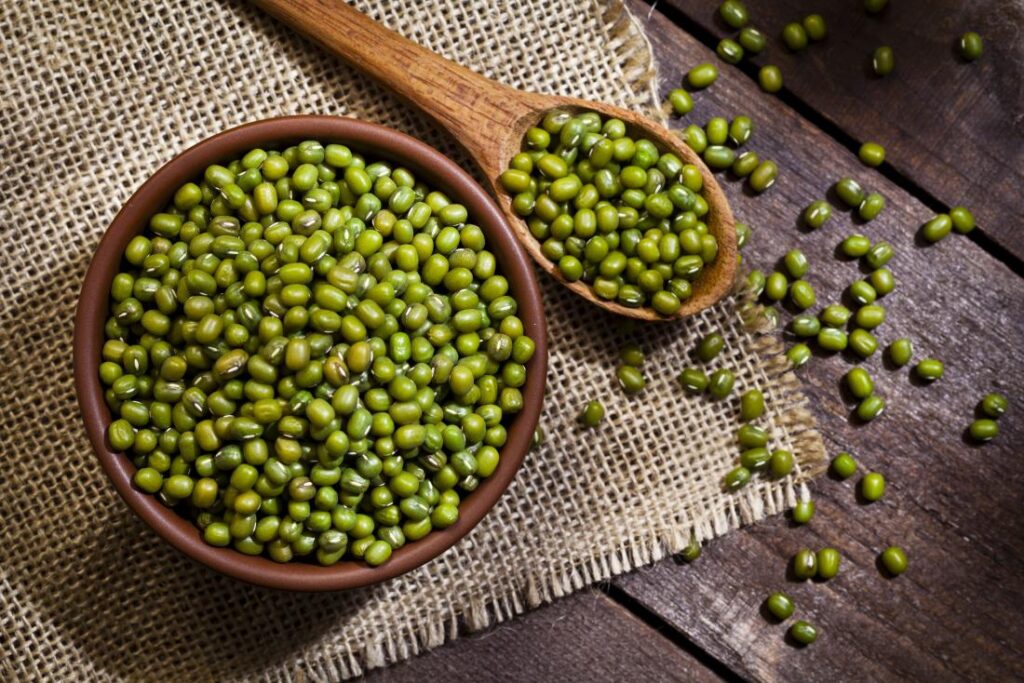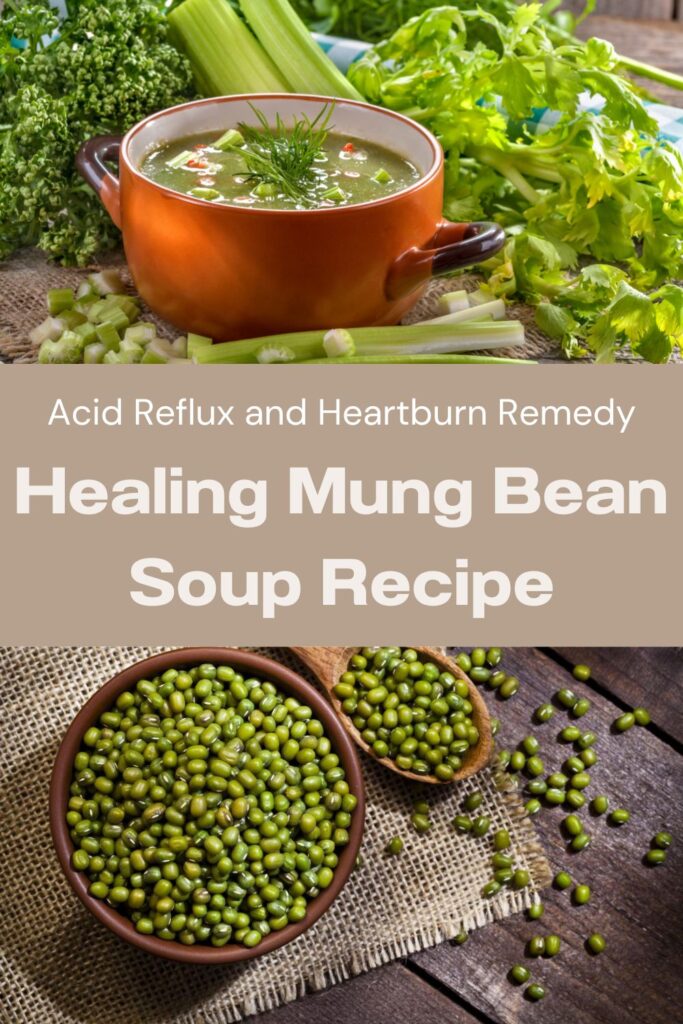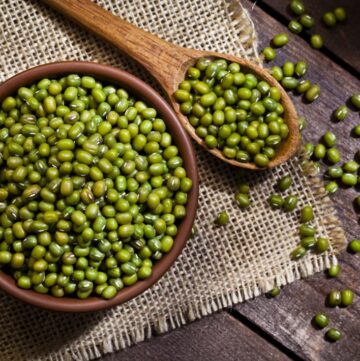Mung beans have become an important therapeutic legume in traditional medicine due to their ability to clear heat, reduce inflammation, detoxify the liver, and cleanse the heart and vascular system. Mung beans are a natural remedy for common “hot” digestive symptoms such as heartburn and acid reflux. Not sure what “hot” symptoms mean? Keep reading below.

*This site may contain links to affiliate websites. As an Amazon Associate, we earn from qualifying purchases.
“Hot” Symptoms
In Traditional Chinese Medicine, we use elemental terms such as hot, cold, wind, damp, dry, yin, and yang. These are categories that contain specific symptoms that help us remedy conditions quickly with acupuncture, herbs, and whole foods.
Hot symptoms can be caused by an imbalance of excess hot or cold conditions. How can cold cause heat, you may ask? Well, anything in excess can eventually turn to it’s opposite temperature. We see this frequently in our clinic due to the amount of cold, raw foods people eat (especially year-round!). Our stomach likes to be warm in order to maintain its digestive fire. When we keep adding cold, raw foods or icy drinks to the stomach our body has to work overtime to warm the fire back up. After some time, the body goes into hyperdrive and the fire can become overheated causing “hot” symptoms.
What are hot symptoms?
- Feeling hot
- Bloated
- Gassy (with a stinky odor!)
- Indigestion
- Acid reflux
- Fever
- Irritability
- Temporal headache
- Explosive diarrhea
- Painful urination
- Thirst that cannot be satisfied
- Sunburn
- Heatstroke
- Edema in the lower legs
- Red Rash
- Seasonal Allergies- itchy, red, burning eyes/ nose/ throat/ mouth
These symptoms indicate internal heat and inflammation in the body. It is important to clear this heat quickly to prevent other illnesses or diseases.
A Natural Remedy
When experiencing hot symptoms, such as acid reflux or heartburn, it may cause us to reach for antacids, pepto bismol, or other digestive aids. Fortunately, we can balance these hot symptoms naturally and find relief through whole foods.
First, it is important to eliminate foods that will aggravate your hot condition. Eliminating spicy, fried, grilled, icy, raw, and cold foods is the first step.
You may be thinking, what CAN I eat??
Cooked vegetables, gluten-free grains, roasted or stewed fruit or sauce (such as applesauce), nuts and seeds, small amounts of meat, and room-temperature water are ideal.
Mung beans are recommended in Traditional Chinese Medicine due to their cooling and detoxifying qualities. Check out the recipe below for the details!
Mung beans are not for everyone!
IMPORTANT! This soup is not for everyone. Do not eat this soup if you are experiencing cold symptoms such as feeling cold, watery diarrhea (non-explosive), low energy, or other cold symptoms.
Once symptoms resolve or you begin to feel cold, please stop eating this soup.
Where to find Mung Beans?
You can find mung beans at the grocery store by the dried rice and beans, Amazon, or Thrive Market.
Traditional Chinese Medicine Principles of Mung Bean Soup
Temperature: Cool
Flavor: Sweet, acrid
Actions: Clear heat, clear stagnation
Organs: Stomach, Intestines, liver, gallbladder
Used for constipation and diarrhea due to heat, indigestion, acid reflux, heartburn, smelly gas, bloating, and water retention
Caution: Do not eat if you feel cold, have loose, watery stools, and low energy
Pin for later!

You may also like:
WELLNESS SOUP | MEDICINAL RECIPE FOR COLD AND FLU SYMPTOMS
THE BENEFITS OF MUNG BEAN SALAD FOR SUMMER HEAT

Healing Mung Bean Soup Recipe
Ingredients
- 1 tbs Avocado Oil
- 1/2 Sweet Onion diced
- 2 clove Garlic minced
- 2 Large carrots
- 2 Stalks Celery
- 1 cup Mung Beans
- ½ head Cabbage- green or napa
- 1 tsp Dried Thyme
- 1 Bay Leaf
- 8 cups Bone broth or stock
- Salt and Pepper to taste
Instructions
- In a large pot, heat oil over medium- heat. Add onions and sauté́ until translucent. Add garlic and continue sautéing for 1 minute.
- Add carrots, celery, and cabbage. Cook for another 3 minutes.
- Add mung beans, broth, thyme, bay leaf, salt, and pepper.
- Bring to a boil and then reduce to a simmer for 30-40 minutes. Mung beans should be soft.

